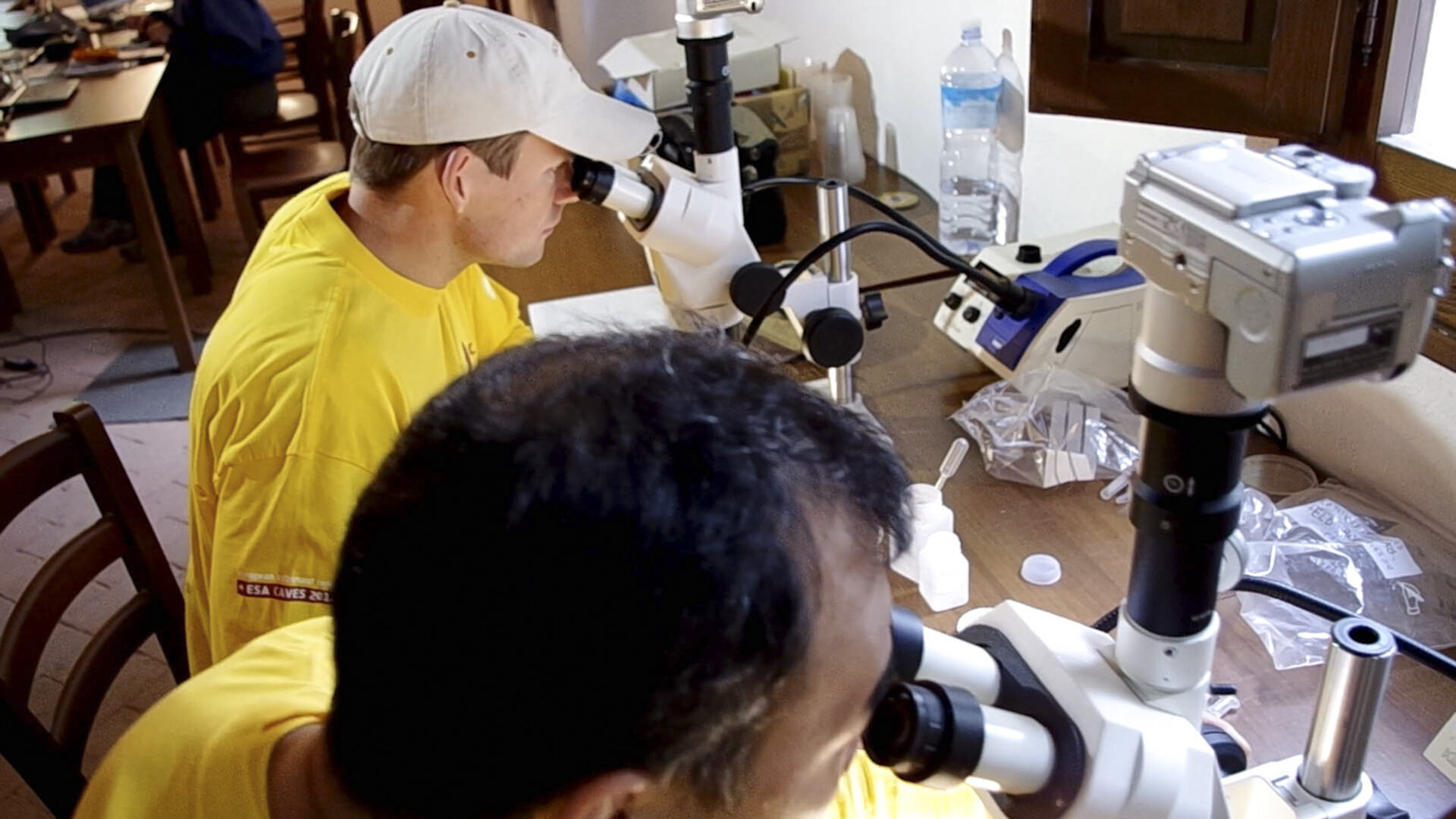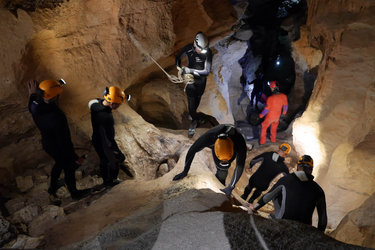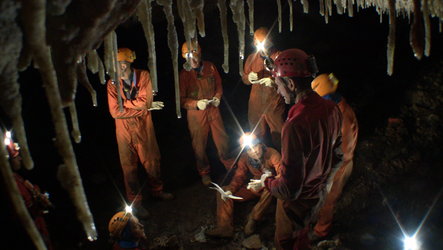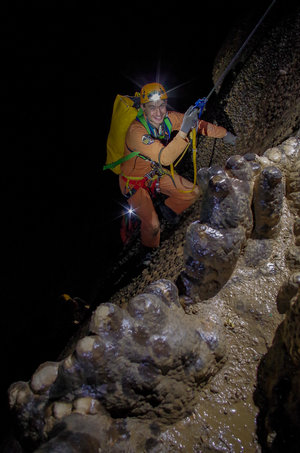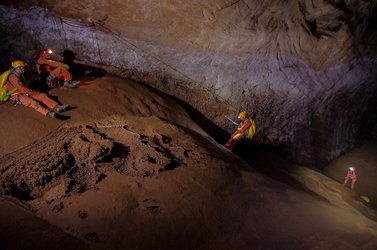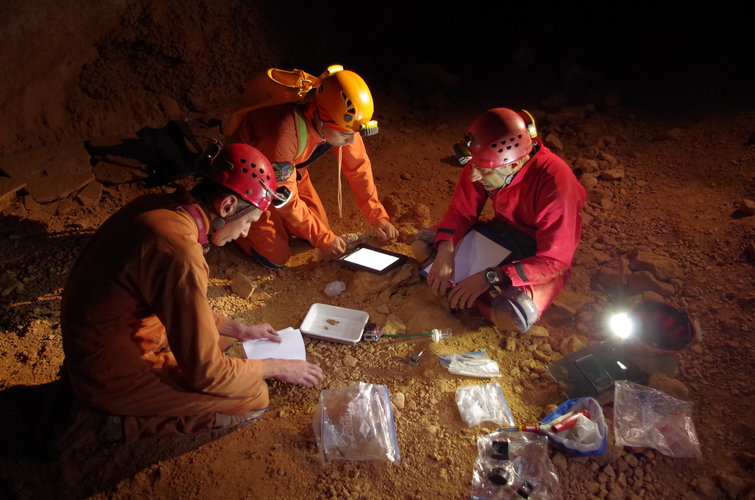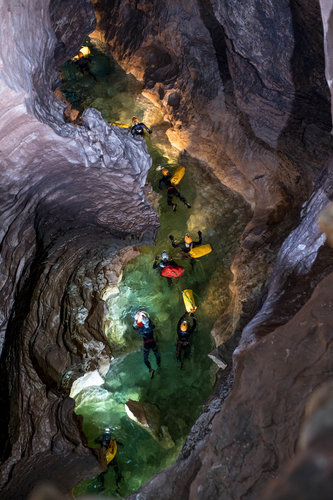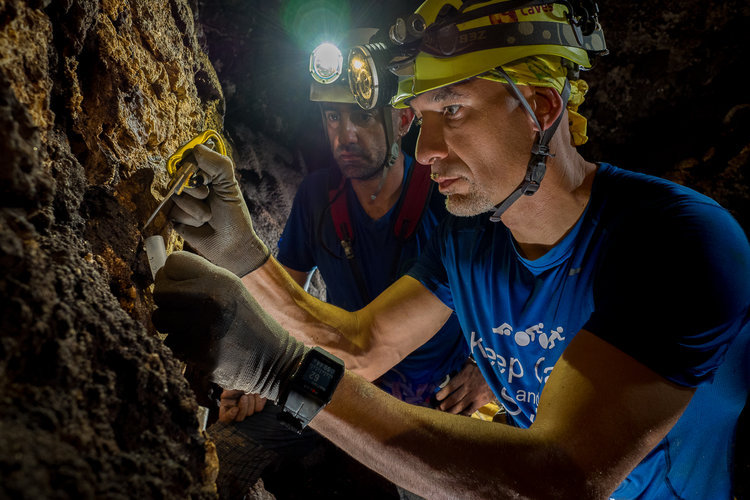Science and technology
Science is an important part of the CAVES course. Like on the International Space Station, the cavenauts run around five experiments each day that have been designed by field scientists. The work produces valid results in published papers.
Scientific work includes taking geological and microbiological samples, mapping the cave, taking photographs, monitoring air flow, carbon dioxide levels, temperature and humidity, as well as measuring radon levels. Samples of sediments, water and air are taken.
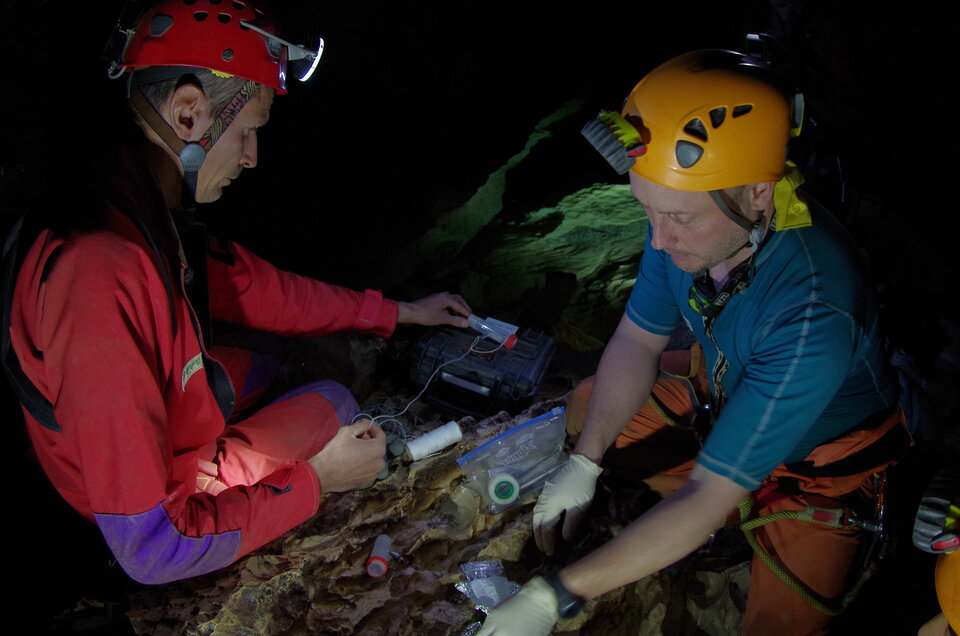
Participants test the quality of water and hunt for underground life forms. The crew fill in factsheets and tables, write down the description of the area and collect as much data as possible. Scientists back home look at the details when they analyse the samples bought up.
Looking for life is part of the CAVES programme. Astronauts learn about using baits to find underground life. Open traps with food are left to attract animals, particularly arthropods. Aided by books detailing around 20 species, the cavenauts must identify and count their prey.
Finding aquatic underground life requires fishing in the dozens of underground lakes. A fishing net is used to find swimming crustaceans for analysis and identification.
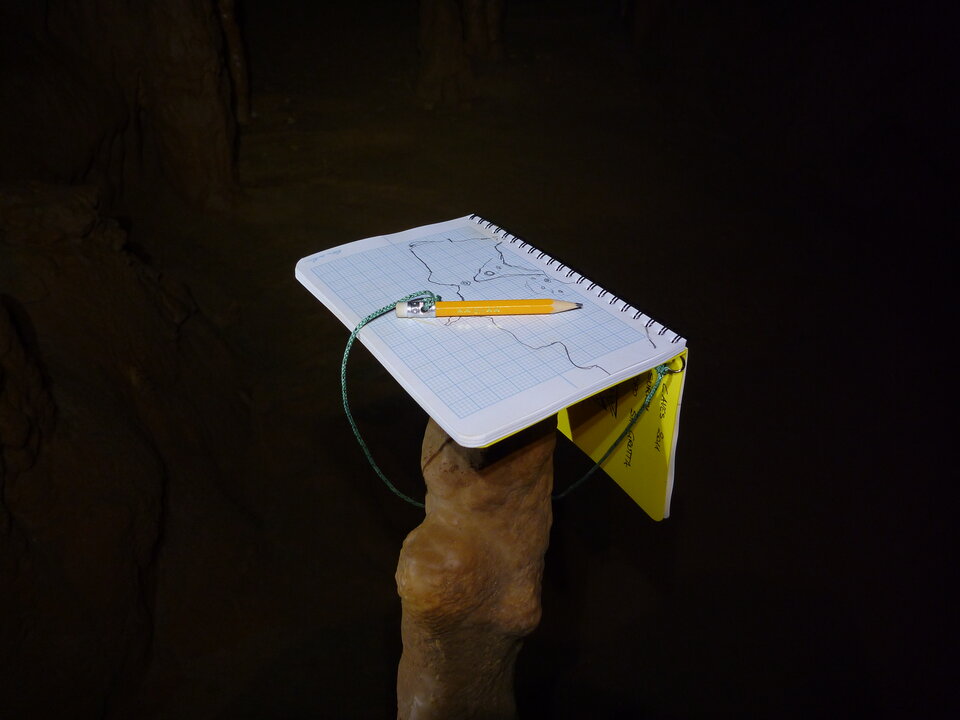
Equipment is installed to monitor wind speed and direction, as well as the temperature and humidity within the cavity. The cavenauts collect data to help scientists understand the cave environment. Wind direction and speed, correlated with temperature and pressure inside and outside the cave can tell a lot about its morphology, and could indicate unmapped entrances.
When exploring new areas, the cavenauts must document everything. Armed with survey instruments such as a compass, inclinometer and laser distance meter the crew size up every passage, produce topographic surveys and take pictures.
Technology
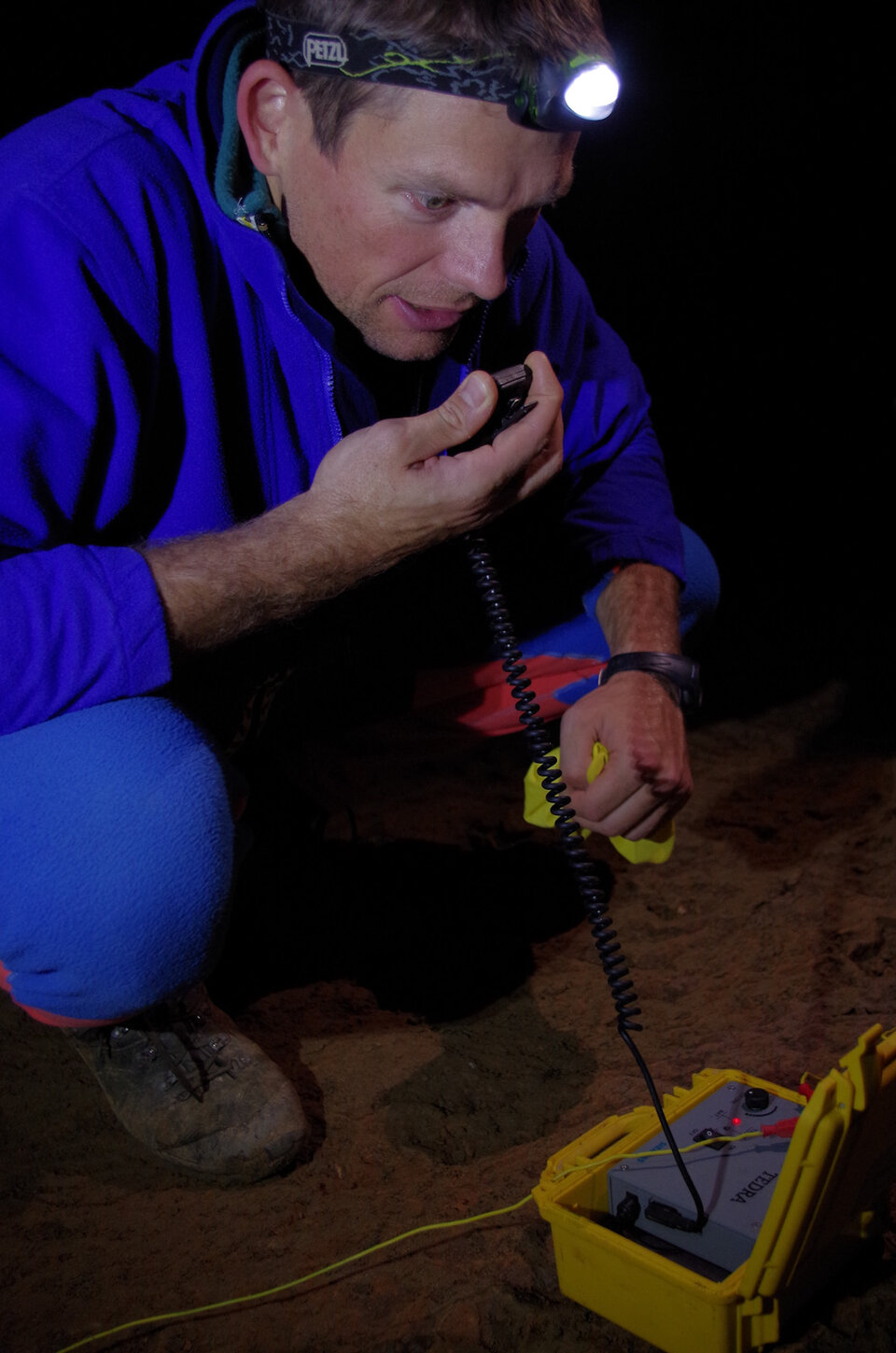
Each year the cavenauts test new technology for caves exploration.
From mobile means of communication to underground positioning systems or digital survey tools, CAVES uses every opportunity to test equipment and help engineers to improve their prototypes under thorough testing protocols.
The seasoned explorers that make up the CAVES support team are keen on testing technologies that will help their future underground extreme adventures.


